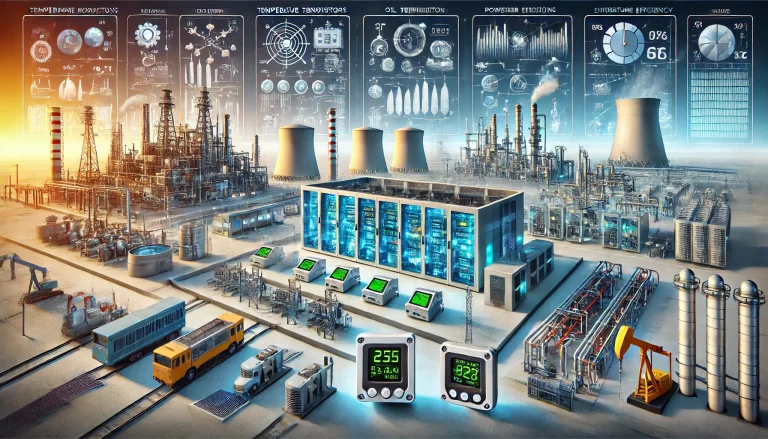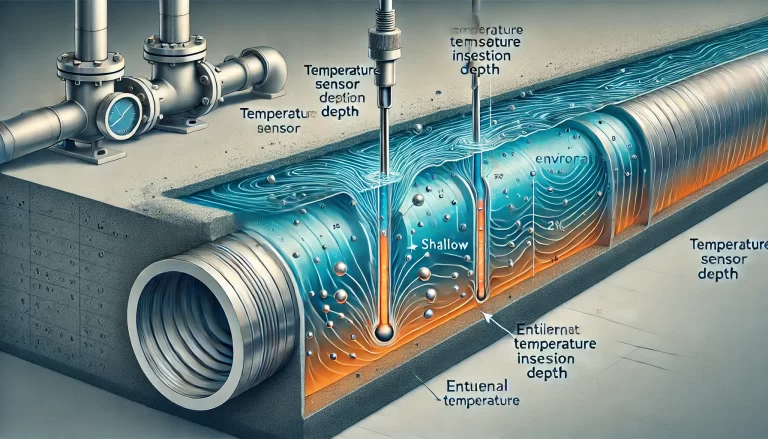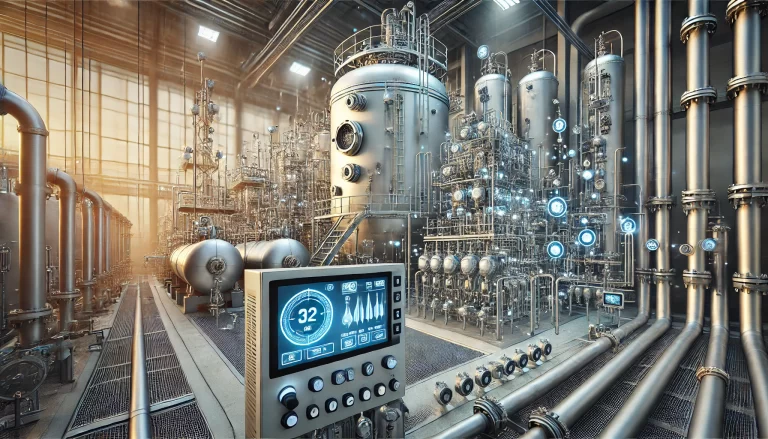In process control, the four fundamental parameters are flow rate, liquid level, pressure, and temperature. Among these, temperature control is widely regarded as the most challenging. This difficulty arises primarily from the mismatch between the high performance requirements of temperature control and the inherent characteristics of the controlled object.
Flow Rate Control: The Simplest of All
Flow rate control stands as the most commonly implemented basic process control due to its straightforward nature. The nonlinearity of control valves can often be disregarded by redefining the process to focus on volumetric or mass flow rates, aligning it with theoretical models. The characteristics of controlled flow systems are typically fast, with broad ranges of stable parameters. Even default PID (Proportional-Integral-Derivative) settings can achieve acceptable control, making flow rate control comparatively simple and easy to tune.

Liquid Level Control: Balancing the System
Liquid level control introduces integral characteristics into the system, which are vital for material balance in process industries. The inclusion of these characteristics ensures system-wide material equilibrium but adds complexity to control design. However, the main goal of liquid level control is not speed but stability against disturbances.
To avoid issues such as out-of-phase oscillations caused by double integration, the integral time constant is deliberately kept longer and weaker. These reduced performance demands lower the overall difficulty of liquid level control. While tuning is necessary, it does not present insurmountable challenges for experienced engineers.
Pressure Control: A Spectrum of Difficulties
Pressure control systems can exhibit traits of either fast self-regulating systems, similar to flow control, or integral systems, akin to liquid level control. The most common issue with pressure control is inadequate proportional action, which leads to poor disturbance rejection and system oscillations. Enhancing proportional gain is often a straightforward solution, even if the required gain sometimes exceeds the expectations of most engineers. For example, gains exceeding 100 are not unheard of. Although the categorization of pressure-controlled objects can be complex, pressure control, in general, does not present the same level of difficulty as temperature control.

Temperature Control: The Most Complex Parameter
Temperature control embodies the principles of energy balance and is often a critical process parameter with stringent requirements. The difficulty of temperature control stems from several factors:
Slow System Response:
- Temperature-controlled systems typically have slow dynamics. Changes in temperature are delayed due to the thermal inertia of the system, making it challenging to respond swiftly to disturbances.
Complex Interactions:
- Temperature systems are often subject to numerous disturbances. Complex interactions within the system may require advanced strategies such as adaptive PID, gain scheduling, or even the redefinition of control problems (e.g., focusing on temperature differentials instead of absolute values).
Sophisticated Tuning Requirements:
- Unlike flow or liquid level control, temperature control often demands precise PID tuning. For example, heat exchangers frequently exhibit combined integral characteristics, necessitating slow PID parameters. Similarly, furnace temperature control often employs cascade control strategies, which require a system-level perspective for proper configuration.
Knowledge-Intensive:
- Effective temperature control demands a broad understanding of process control concepts. Engineers must consider alternative solutions, such as selecting sensitive plate temperatures or introducing advanced control structures. In many cases, standard PID tuning might not suffice to resolve the underlying issues, making temperature control a field that requires substantial expertise.
Even under these circumstances, micro-level adjustments like derivative action are not always necessary in temperature PID control. The key lies in applying an integrated approach, combining theoretical knowledge with practical experience.

The Key to Mastering Temperature Control
Temperature control challenges require engineers to adopt a more comprehensive understanding of process control principles. While some strategies involve trial-and-error tuning, others demand structural redefinition or advanced techniques like model predictive control (MPC).
Conclusion
Among the fundamental process control parameters, temperature control stands out as the most complex due to its slow response, high sensitivity to disturbances, and sophisticated tuning requirements. To excel in this field, engineers must go beyond conventional methods, integrating both theory and application. With the continued advancement of control technologies and strategies, the barriers to effective temperature control can gradually be reduced, leading to more efficient and stable industrial processes.
